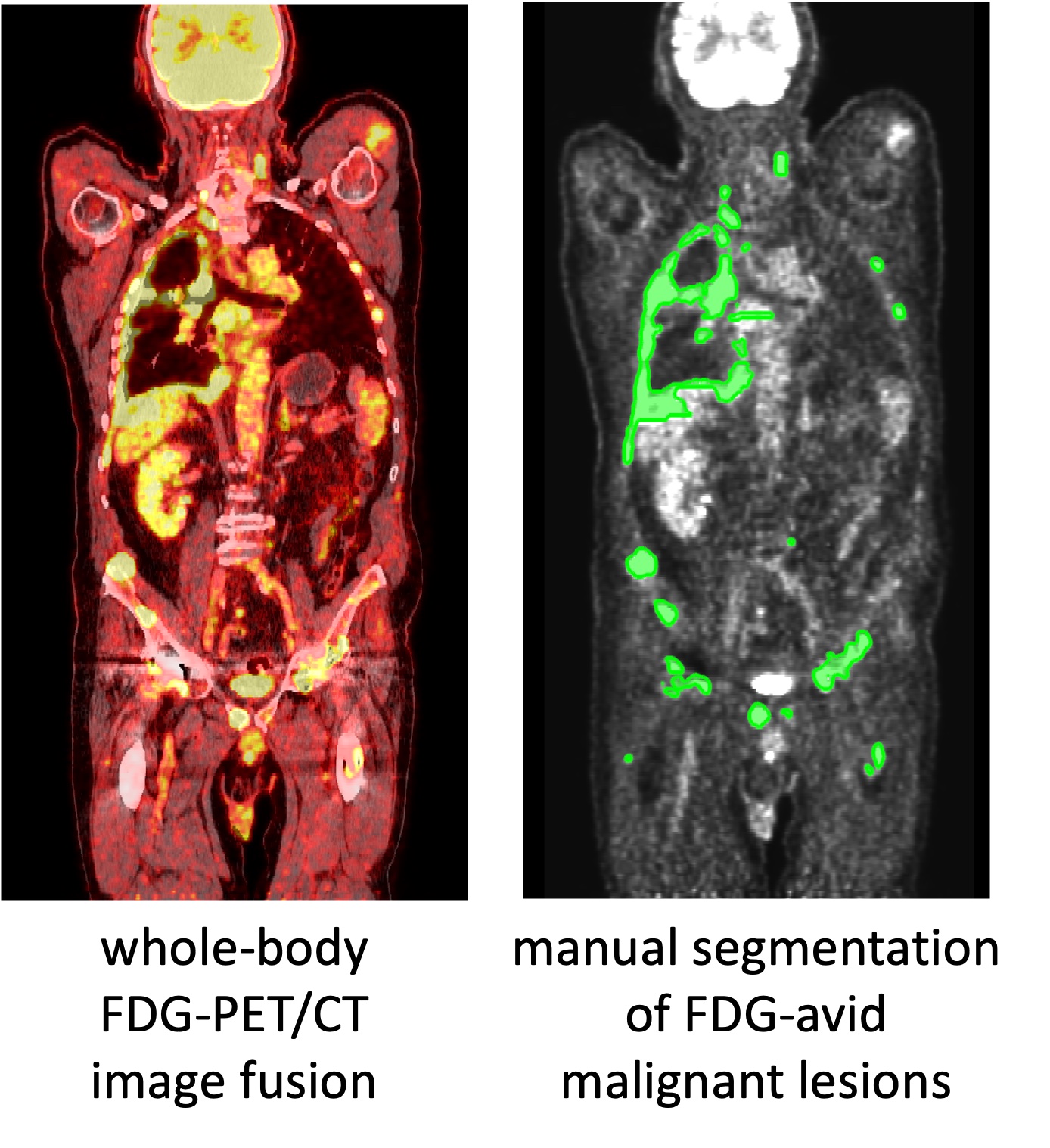autoPET II - Automated Lesion Segmentation in PET/CT - Domain Generalization
📰 News
April 1st:
The new autoPET-III challenge is live.
October 12th:
Dear autoPET enthusiasts,
we are pleased to announce that we are going to host an online challenge session on the
9th Nov, 2 PM - 3:30 PM (UTC+0, Time conversion)
Please register for the session here (to retrieve the Zoom link).
We will announce the winners of the challenge in this session and ask the top teams to give a short presentation about their solution. We will reach out to the top teams via separate mails in the next days.
September 19th:
Dear autoPET participants,
in order to fix any bugs that may appear in the final data, we strongly recommend that you submit the first final container today. Some volumes are small which might lead to problems when using skip-connections without padding.
September 14th:
Dear autoPET participants,
the challenge deadline is approaching and
we would like to encourage you to submit your algorithm also to the
final test set. Don‘t be discouraged by the preliminary results as these
are not representative. For everyone who submits now, the chances are
good as not many teams have provided a final submission so
far.
August 22nd:
The final test phase is now open for submissions. Please note that in total only 2 submissions per team are allowed to the final test phase. We encourage everyone to first test their Docker containers via the preliminary test phase which will remain open till the end of the challenge. The final leaderboard is private and the final ranking will be announced at the MICCAI 2023 challenge session.
March 8th:
Website is online and challenge opens.
🎬 Introduction
Positron Emission Tomography / Computed Tomography (PET/CT) is an integral part of the diagnostic workup for
various malignant solid tumor entities. Due to its wide applicability, Fluorodeoxyglucose (FDG) is the most widely
used PET tracer in an oncological setting reflecting glucose consumption of tissues, e.g. typically increased glucose
consumption of tumor lesions.
To
promote research on machine learning-based automated tumor lesion
segmentation on whole-body FDG-PET/CT data we host the autoPET-II challenge - as a successor of the autoPET challenge - and provide a large, publicly available training data set on TCIA:
AutoPET-II is hosted at the MICCAI 2023:
I.) Accurate detection and segmentation of FDG-avid tumor lesions in whole body FDG-PET/CT. The specific challenge in automated segmentation of FDG-avid lesions in PET is to avoid false-positive
segmentation of anatomical structures that have physiologically high FDG-uptake (e.g. brain, kidney, heart, etc…)
while capturing all tumor lesions.
II.) Robust behavior of the algorihtms in term of moderate changes in acquisition protocol or acquisition site.
This will be reflected by the test data which will be drawn partly from the same distribution as the training data
and partly from a different hospital with a similar, but slightly different acquisition setup.

📋 Task
Automatic tumor lesion segmentation in whole-body FDG-PET/CT on large-scale database of 1014 studies of 900 patients (training database) acquired on a single site for accurate and fast lesion segmentation and to avoid false positives (brain, bladder, etc.).
The challenge scope is:
- to focus on robustness across different environments and
- to relax the restriction regarding the use of external and additional data for algorithm development.
Testing will be performed on 200 studies (held-out test database). Test data will be drawn in part (1/4) from the same source and distribution as the training data. The majority of test data (3/4) however will consist of oncologic PET/CT examinations that were drawn from different sources reflecting different domains and clinical settings.
Prizes will be awarded in three categories:
- Award category 1: Highest overall score
- Award category 2: Highest robustness across domains
- Award category 3: Jury prizes for scientific contribution and creative engineering

